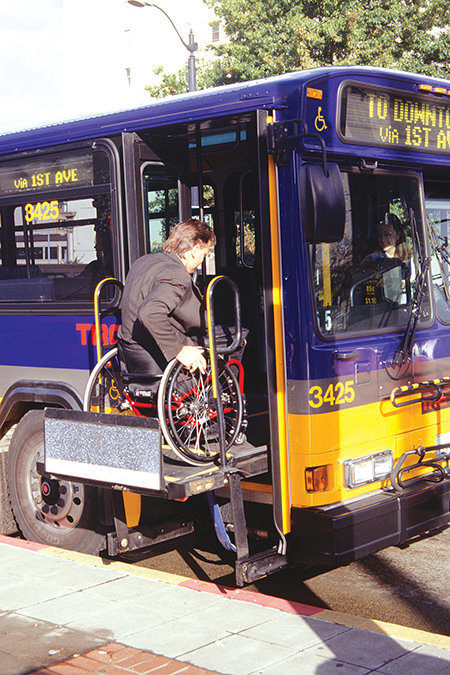
By Jeff Zarr
The transit space is facing higher paratransit costs, an aging population that will increase the number of paratransit riders in the coming years, a decline in fixed route ridership, all while fighting steady traffic congestion. This is not sustainable.
 The industry needs to transition from its current structure
The industry needs to transition from its current structure
The U.S. has an aging population, and people aged 65 and older make up about 15 percent of the total population. From the latest census numbers, by 2030 they’ll make up 21 percent, and by 2060 they’ll be almost 25 percent of the total population. That’s an increase of 112 percent for people in this demographic. The makeup of the country will heavily lean toward an older generation.
We are living longer. As a result of an increasingly older population, we are experiencing a corresponding increase in paratransit riders. Currently, riders are picked up using dedicated paratransit vehicles, non-dedicated taxis, and TNC vehicles. Maintaining this structure into the future means more riders, which ultimately means more cost and more cars on the road. And we know this is not the answer. So, we need to shift our way of thinking. In fact, by focusing on bringing more taxis or TNCs onto the streets, we’ve lost focus on what transit agencies actually do: mass transit.
There is still work to be done
Over 25 years ago, the ADA was created so everyone could be treated equally, have the same opportunities, and in transit, the same freedom of mobility. The need to make public transit equally accessible was recognized, but retrofitting public transit was going to take time. Concurrent with the retrofitting efforts, the industry offered a separate type of comparable service (paratransit) to meet the needs of people unable to use conventional public transit.
Some progress has been made – buses are no longer manufactured with steps – but infrastructure changes take time. Besides time, the cost to do a full infrastructure overhaul is substantial. Also, because passengers are comfortable with the door-to-door service for a price comparable to that of conventional transit, transit agencies struggle shifting paratransit passengers to conventional transit even if certain rides are accessible. But if transit agencies can refocus their efforts/resources to transform paratransit and conventional services, you could create a system that would decrease the overall cost of paratransit delivery and increase ridership on conventional services.
Multimodal and alternative paratransit options
At some point, the increased ridership and increasing cost of paratransit will cause transit agencies to take a hard line and begin shifting capable paratransit riders to conventional transit. For some, this can still mean door-to-door service, but that might look a little different.
Most agencies today aren’t taking full advantage of the solutions out there. Multimodal and alternate solutions (deviated-fixed route) already exist to alleviate paratransit costs and declining fixed route ridership. It’s possible to shift transit modes on a trip-by-trip basis or to create a true first-mile, last-mile service – guided through conventional transit – on paratransit.
The future awaits
The goal is to create a service that is accessible for all. Yes, there are times when you will need to use paratransit vehicles (or taxis/TNCs), but it should feed your accessible fixed route options as much as possible. It shouldn’t be crazy to think that this is what a trip could look like: A passenger pulls out their phone and schedules a trip. Five minutes later, they are picked up at their house (via paratransit, taxi, or TNC). From there, they are dropped off at the closest fixed route service, ride that and, if needed, are picked up again to complete the trip.
The only way to make this a reality is to have a 10- to 20-year plan for mass transit. Not just for paratransit, but how to make conventional transit more accessible. It’s the only way to build a sustainable future for public transit.
Jeff Zarr serves as industry solutions manager – demand response for Trapeze Group. Visit www.trapezegroup.com for more information.
